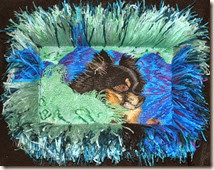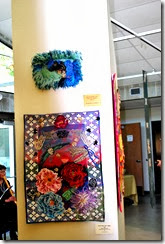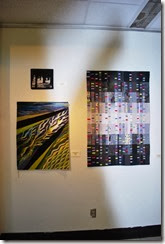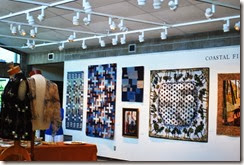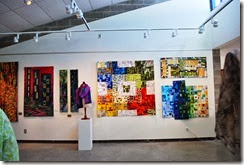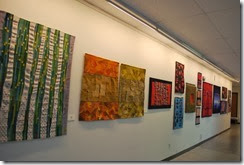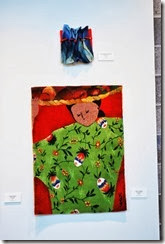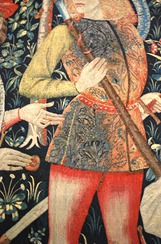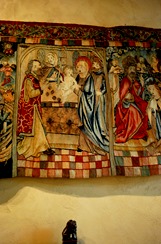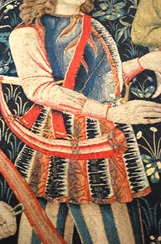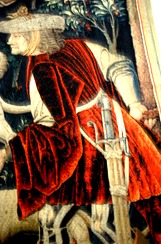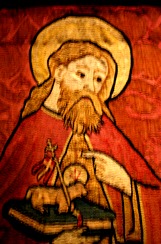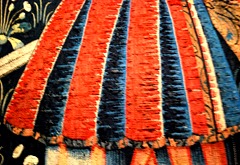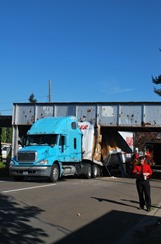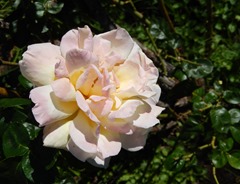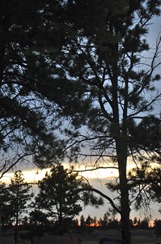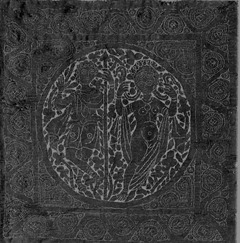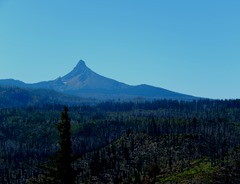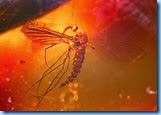 r the fastest-the speed of light(186,000mph) and or like the slow dripping of molasses and/or amber(mpgh-miles per best guess an hour) on a cold day-sometimes with the ability to happen simultaneously.
r the fastest-the speed of light(186,000mph) and or like the slow dripping of molasses and/or amber(mpgh-miles per best guess an hour) on a cold day-sometimes with the ability to happen simultaneously. I am better then a fourth done with my next piece. It’s at the stage that it’s becoming fun to weave. The decisions have been made and it should work out just fine. I usually hold my breath until I get this
 far. The second loom is warped and ready for the smaller pieces. Sometime this weekend I’ll spend time warping a loom for a student that is coming to stay for a few days to study here in the workshop.
far. The second loom is warped and ready for the smaller pieces. Sometime this weekend I’ll spend time warping a loom for a student that is coming to stay for a few days to study here in the workshop. These two smoky sunset pictures were taken by Trish Heath a friend of mine who generously lent them to me for use for cartoons. My camera was

 packed and I couldn’t retrieve it in time. So I didn’t get any shots of this incredible sunset.These will be the bases for my 3 inch by 3 inch series called Elements
packed and I couldn’t retrieve it in time. So I didn’t get any shots of this incredible sunset.These will be the bases for my 3 inch by 3 inch series called ElementsNice surprise today. It’s snowing! AND, sticking around for a bit. I guess winter really is here and autumn is gone. Snow is little bit of a rarity in the part of Oregon I live in-especially to accumulate 4-6 inches
 and hang around a bit. Biggest surprise-Chene loves the
and hang around a bit. Biggest surprise-Chene loves the e snow. He wandered all over the yard and side walk, jumping through 6-7 inch drifts. Didn’t even whine about his cold bear belly. He has a six inch square bald spot between his back legs and on his abdomen that he tries very desperately to keep warm and dry most of the time. So does this mean I have to climb up on a letter and remove the snow from the solar panels?
e snow. He wandered all over the yard and side walk, jumping through 6-7 inch drifts. Didn’t even whine about his cold bear belly. He has a six inch square bald spot between his back legs and on his abdomen that he tries very desperately to keep warm and dry most of the time. So does this mean I have to climb up on a letter and remove the snow from the solar panels?“Small” aside-
| Rebecca Metzoff has a very interesting blog on her Grandmother’s bobbins. It started out with an entry for October 4 and her new blog has some interesting pictures and text from a pamphlet -Rug Weaving, Dryad Leaflet No. 85, Dryad Handicrafts, Northgates, Leichester. Printed in England by the Blackfriars Press Ltd, Leicester. |
Beginnings and endings-
First, the logic of even needing to do anything with ends and tails-

Double sided or not. The difference-ends on the back o
 r double sided or both. Left is a photo of the back of one of my pieces with the ends left hanging. Right is a very fine double sided tapestry-probably used as a wall to divide up space. in a large room. It may be Scandinavian-maybe.
r double sided or both. Left is a photo of the back of one of my pieces with the ends left hanging. Right is a very fine double sided tapestry-probably used as a wall to divide up space. in a large room. It may be Scandinavian-maybe.  The third and or clinker is a rya edge that has purposely been woven or tied or knotted so the ends could hang out and the tapestry has the ends hanging off the back side.
The third and or clinker is a rya edge that has purposely been woven or tied or knotted so the ends could hang out and the tapestry has the ends hanging off the back side. Secondly,Some materials need to be secured more then others or you're going to have weft ends where you don’t want them hanging off edges or on the front of the tapestry.
Tradition and Romance-There is a whole thing about damp castle walls and wear naturally felting the ends and protecting the back of the tapestry from wear. Occasionally rumoured or hinted at on the opposite end as a protector against wear on sand.
Does it work? Who knows? But, I probably won’t live long enough to ever find out if it worked on one of my tapestries. So I rather error on the side of doing too much instead of too like. I pig tail everything. There are many weft materials that do not have enough fuzz or loft or along enough staple to do this even over time. The rayon's, silks and embroidery floss and dressmakers threads I use will not felt/full or stay put.
There are basically 5 traditions maybe 4 depending on whose logic is applied for finishing weft beginnings and endings.So this is what I think.
1. Leave the weft hanging on the back of the tapestry and do nothing.
2. The overhand knot to secure ends left hanging. Can be done with a pigtail or without. If I am using a lot of slick yarns in my weft bundle. I will sometimes do both. I was taught this by one of my Gobelin instructors, but I am not sure if it is really part of the Gobelin tradition.

Overhand knot. Use the tip of the bottom to snug it up tight against the back of the tapestry. Can be done from the front or the back when your weaving
3. Gobelin style using a pig tail or an overhand knot to keep the weft ends on the back of the tapestry and then cut short.This can be reversed so that one can do it from the front of the tapestry, which is what the diagrams are portraying. MAINLY--because I now work from the front and teach people to weave from the front. But I used this same technique to weave from the back for over 10 years. Ends trimmed to about .5 inches after the tapestry is finished or while still on the loom as you go. Pig tails can easily done for the front or back of a tapestry.
That said What I have found when I am teaching is that pigtails are either the easiest thing in the world to do or the hardest.
The diagram below is of pigtails reversed from working on the back to how to do them from the front.
The trick have found is to remember that you always need to be aware of whether the warp thread is a hill or valley. If the pig tail is going to be on a hill thread it goes behind 2. If it’s going to be on a valley thread it goes behind one warp.
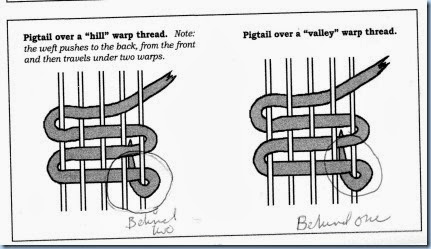
Here are some pictures that I hope will help-

note this one goes behind one warp thread
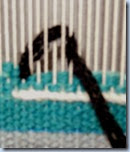
This is behind two warp threads

3. For double sided or reversible tapestries or just to anchor the weft threads. This is the wispy weft thingy where ends are graded at an angle and laid with the ends or tails on each other. Doesn’t really have a name. It’s all done as one weaves. Related to Navajo and some Middle Eastern cultures. Some have hypothesized that this technique might have been brought to the America’s by the Spaniards. Usually by those who forget that there was already a tapestry weaving culture in the America's long before Europeans arrived.
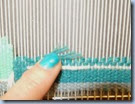 Ending Threads on the fell line are tapere
Ending Threads on the fell line are tapere d and or graded at an angle. Weft bundle is cut at an angle or graded.
d and or graded at an angle. Weft bundle is cut at an angle or graded.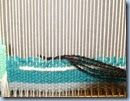 Weft threads are laid on top of of tapered wefts on fail line in the same shed.
Weft threads are laid on top of of tapered wefts on fail line in the same shed.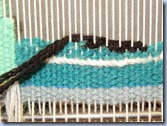
Woven over weft holds the ends in place in place.
This can also be done by snapping or pulling a singles thread between your fingers instead of using scissors
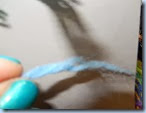 . The two ends of the singles yarn will fuzz out and taper out to nothing.
. The two ends of the singles yarn will fuzz out and taper out to nothing.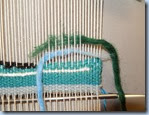
note the two tapered ends are laid in the same shed and then beaten down.

4. Weft ends are needled in down the warp channel that’s created by the over and under of the weaving process. Probably a Scandinavian tradition of beginnings and endings in Aklae and Rolakken.
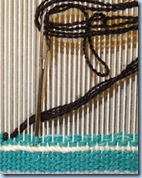
 The needle with the weft end being needled down through the channel by the warp
The needle with the weft end being needled down through the channel by the warpIn real life I probably would have gone down several more wefts and all trace of the black would have disappeared when beaten in. This can be done while weaving or when the weaving is finished on or off the loom depending on personal preference.
5. There are two variations of this one. I really wish I had photos of both these processes, but I don’t.
The first is to leave the ends hanging on either the front and back. AND, then fulling the tapestry by washing machine, beating it on a rock with mild soap and water.( Fulling is a process that increases the compactness of a woven woolen fabric by subjecting it to , moisture, heat, friction until the fabric shrinks between 2-5 percent or more.Shrinkage should occur in both the warp and weft.) This traps the ends. One then comes back and trims the ends to the surface of the tapestry. If you brush the wool surface gently all of the fuzzy will disappear into the surface. This works best on woolens. Less so on worsted wefts. Not at all on Cottons, Silks and Rayon's and linen threads.
The second variation is Turkish and before you react with stunned disbelief(my first reaction) I do have a DVD of this process. Everything is the same until the fulling is finished. It was first place into a centrifugal spinner with soap and water. The tapestry is laid out wet on a hard surface. More soap and water are applied. A very brushy, sooty, orange/red flame thrower is then used to scorch the surface of the tapestry. It burns off the ends turning the surface of the tapestry black. The tapestry is then thoroughly rinsed of all residue of soap and scorch. The torching doesn’t affect the original colour and the black rinses off.
All that Said-Here are my reasons for securing the weft ends with a pigtail or a knot or even using a fulling process or a needle process to control and ends.
1. Tails have a tendency to move to the surface of a tapestry or come loose, hang out as a thread on the surface and look funky and if just cut off will leave a little puff of weft ends on the surface. It most often happens in an exhibit or when you photograph a piece. Very embarrassing . It’s an unspoken law of the universe you never catch them until it’s too late and way to embarrassing.
2. If a loose end is cut off it can unravel back past the next warp and change the design.
3.If not taken care of properly sometimes an end will wiggle loose enough to leave a small loop on the surface of a tapestry and snag.
4. There’s always the one client who will take an unclothed vacuum to the surface of a textile and suck out an unsecured tail.
3. Sometimes you want to make sure that a half pass or a demi duite maintains it’s integrity as every other thread when ending a line of demi duite
Last, but not least. I have found some new samples of the soumack and brocading techniques. They are beautiful Iranian rugs. I am getting a huge stack of new to me techniques to learn about and study. I’ll be writing more about these later.

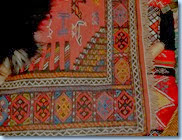
This rug is 48 inches by 48 inches with a tapestry woven back ground. All designs are soumack or brocading.
The two bottom photos are the end detail and the central portion of a 9 foot by 2 foot runner of some sort. It is tapestry woven with soumack and brocading.

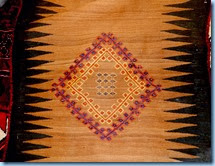
That’s more then enough for now!
I kept my promise to several students about beginnings and endings and the elusive pigtail.
Chene’s
as bad as cat when it comes to being right where the action is

Bye for now,
kathe
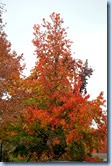


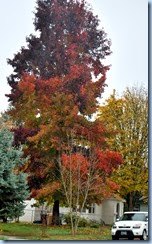



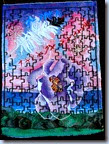




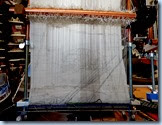

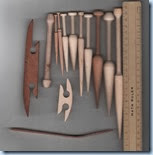
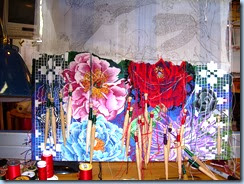
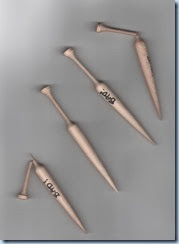
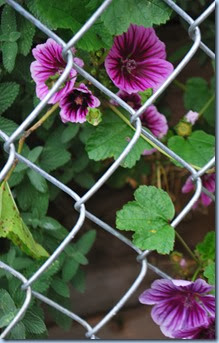
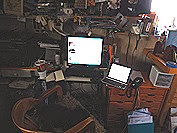
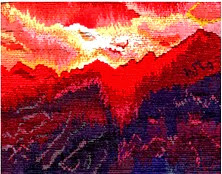
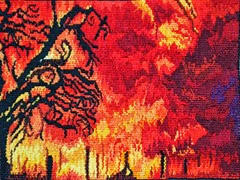
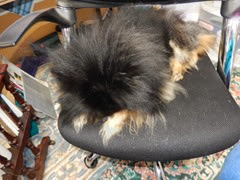
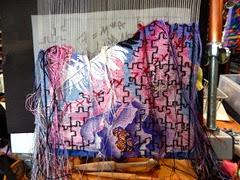
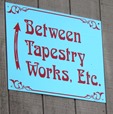


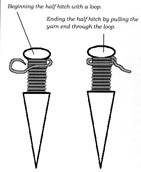
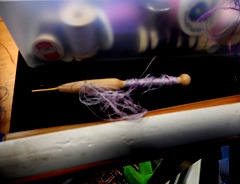
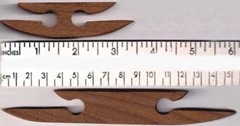
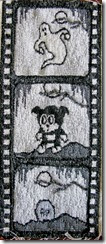
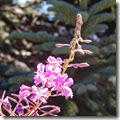 students from the 80’s that I taught in Corvallis for years and years starting in 1982. She’s now in her mid 90’s. She was also one of the original founders of the Corvallis hand weavers guild in 1948 the year I was born. She is now in a nursing care center for Alzheimer patience.
students from the 80’s that I taught in Corvallis for years and years starting in 1982. She’s now in her mid 90’s. She was also one of the original founders of the Corvallis hand weavers guild in 1948 the year I was born. She is now in a nursing care center for Alzheimer patience.